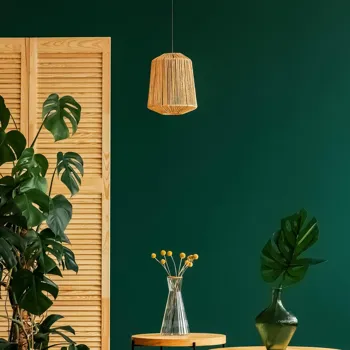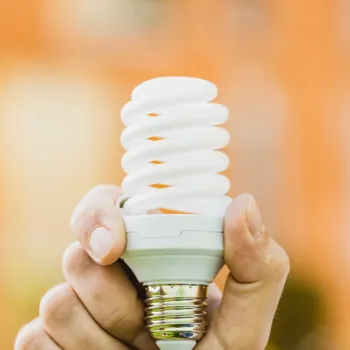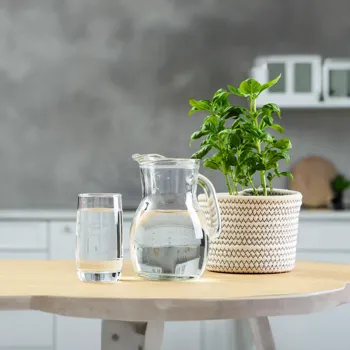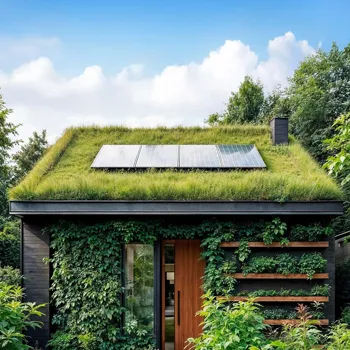Discover 10 easy ways to make your home eco-friendly and save money while helping the planet! Read more for simple tips
Namaste, readers! Are you feeling the urge to go green but think it's too difficult
or expensive? Fret not! Going eco-friendly doesn't require a complete overhaul of your life. Small, simple changes in your daily routines can make a big difference in reducing your environmental footprint.

Let's explore ten easy ways to make your home more sustainable and contribute to a healthier planet, one step at a time. These tips are not only good for the environment but can also save you money in the long run. So, get ready to embrace a greener lifestyle!
Switch to LED bulbs for energy savings and reduce waste
First, let's talk about lights. Switching to LED bulbs is one of the easiest and most impactful changes you can make. LEDs use significantly less energy than traditional incandescent or even CFL bulbs, and they last much longer.

This translates to lower electricity bills and less frequent replacements, saving you money and reducing waste. Consider replacing all your bulbs with LEDs gradually as your old ones burn out. Also, make it a habit to turn off lights when you leave a room.
This simple act can contribute to significant energy savings over time. Natural light is your friend! Open your curtains and blinds during the day to maximize natural light and reduce your reliance on artificial lighting.
Conserve water: use low-flow devices, fix leaks, wash full loads, harvest rainwater
Next, consider water usage. Water is a precious resource, and conserving it is crucial. Install low-flow showerheads and faucets. These devices reduce water consumption without compromising water pressure. Take shorter showers, every minute counts!

Be mindful of how long you leave the water running while brushing your teeth or washing dishes. Fix any leaky faucets promptly. Even a small drip can waste a considerable amount of water over time. When washing clothes, always wash full loads.
Washing smaller loads uses the same amount of water and energy, so save water by waiting until you have enough clothes to fill the machine. Consider harvesting rainwater for use in watering plants.
This is a great way to conserve water and provide your plants with a natural, chemical-free source of hydration. Every drop saved makes a difference!
Embrace sustainable shopping: reduce, reuse, recycle, support local, minimize packaging waste
Now, let's talk about shopping. Reduce, reuse, and recycle are the three pillars of sustainable living. Before buying anything new, ask yourself if you really need it. Opt for products with minimal packaging. Support local businesses and farmers markets.

They often have less transportation and packaging involved. When shopping, bring your own reusable bags. Plastic bags are a major source of pollution and can take hundreds of years to decompose. Consider buying products in bulk to reduce packaging waste.
Look for products made from recycled materials. These products help to close the loop and support the recycling industry. Avoid single-use plastics whenever possible. Carry a reusable water bottle and coffee mug.
Manage waste effectively: compost, recycle, reduce food waste, donate items
Let's look at how we can manage waste. Composting is a fantastic way to reduce food waste and create nutrient-rich soil for your garden. Start a compost bin in your backyard or use a kitchen composter for smaller spaces. Separate your waste properly.
Make sure you have separate bins for recyclables, paper, and general waste. Recycle everything you can. Check with your local municipality to find out what materials are accepted for recycling. Reduce food waste by planning your meals and using leftovers creatively.
Store food properly to prevent spoilage. Donate unwanted items to charity instead of throwing them away. Give your old clothes, furniture, and electronics a new life.
Reduce energy consumption: unplug devices, adjust thermostat, seal drafts, use efficient appliances
Let's consider energy consumption. Unplug electronic devices when not in use. Many devices, even when turned off, continue to draw power. Use power strips to easily turn off multiple devices at once. Adjust your thermostat.

During the summer, raise the thermostat a few degrees and during the winter, lower it a few degrees. Use fans to circulate air and reduce your reliance on air conditioning. Seal any drafts around windows and doors. This will prevent heat loss in the winter and keep your home cooler in the summer.
Consider investing in energy-efficient appliances when it's time to replace your old ones. Look for appliances with the Energy Star label.
Use natural products for cleaning to protect health and environment
Finally, think about cleaning. Use natural cleaning products. Many commercial cleaning products contain harsh chemicals that can be harmful to your health and the environment. Make your own cleaning solutions using ingredients like vinegar, baking soda, and lemon juice.
These ingredients are effective, affordable, and environmentally friendly. Avoid using paper towels and disposable wipes. Opt for reusable cloths instead. They can be washed and reused multiple times, reducing waste. Diffuse essential oils instead of using air fresheners.
Many air fresheners contain harmful chemicals. Grow indoor plants to improve air quality. Plants naturally filter toxins from the air.
AI Generated Content. Glance/InMobi shall have no liability for the content









